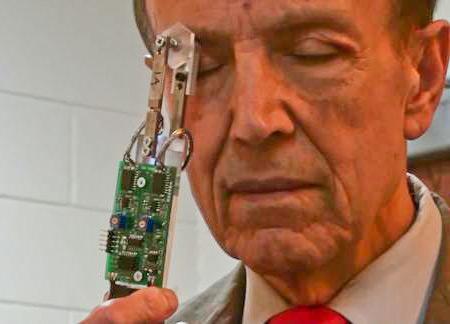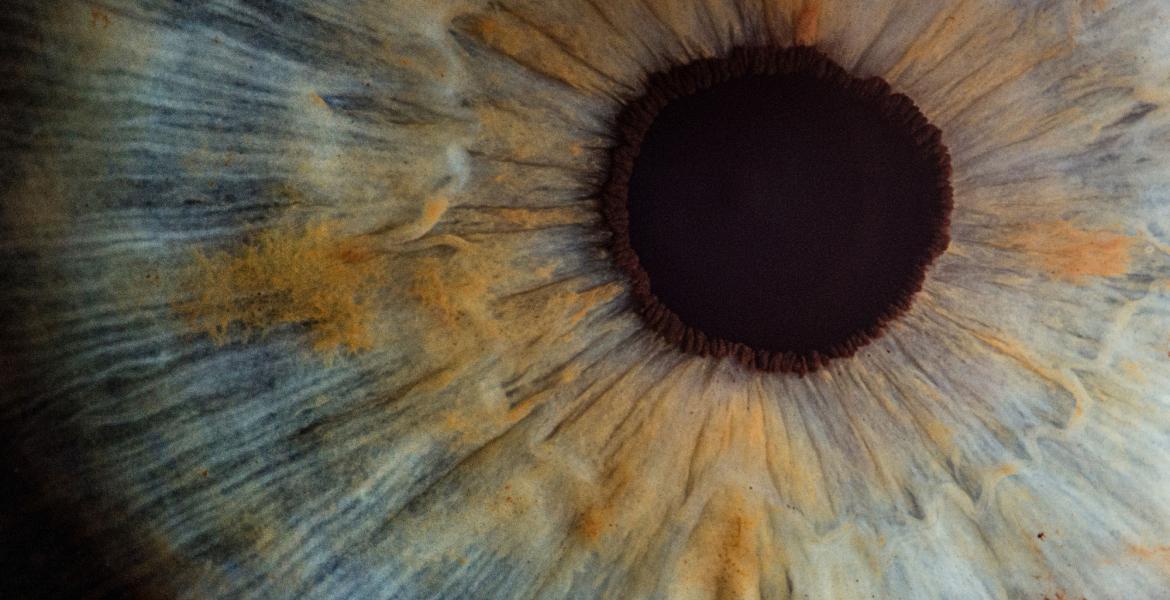New Glaucoma Test Allows Earlier, More Accurate Detection
Cumbersome glaucoma tests that require a visit to the ophthalmologist could soon be history thanks to a home test developed by a UA engineer.
The self-test instrument has been designed in Eniko Enikov's lab at the UA College of Engineering. Gone are the eye drops and need for a sterilized sensor. In their place is an easy-to-use probe that gently rubs the eyelid and can be used at home.
"You simply close your eye and rub the eyelid like you might casually rub your eye," said Enikov, a professor of aerospace and mechanical engineering. "The instrument detects the stiffness and, therefore, infers the intraocular pressure." Enikov also heads the Advanced Micro and Nanosystems Laboratory.
While the probe is simple to use, the technology behind it is complex, involving a system of micro-force sensors, specially designed microchips, and math-based procedures programmed into its memory.
Enikov began working on the probe four years ago in collaboration with Dr. Gholan Peyman, a Phoenix ophthalmologist. "We went through several years of refinement and modifications to arrive at the current design," Enikov noted.

The National Science Foundation has funded the work, and Enikov and Peyman now are seeking investors to help fund final development and commercialization of the product.
In addition to screening for glaucoma, an eye disease that can lead to blindness if left untreated, the device corrects some problems with the current procedure, and can be used to measure drainage of intraocular fluid.
"Eye pressure varies over a 24-hour cycle," Enikov said. "So it could be low at the doctor's office and three hours later it might be high. With only a single test, the doctor might miss the problem. Having the ability to take more frequent tests can lead to earlier detection in some cases."
Once the diagnosis is made, several treatments are available. The question then is: How effective are they? Patients could use the probe at home to trace how much the pressure decreases after using eye drop medications, for instance.
"One of the reasons pressure builds up in the eye is because fluid doesn't drain properly," Enikov noted. "Currently, there are no methods available to test drainage."
Safer Testing
Current tests require applying pressure directly to the cornea, but only very light pressure is safe to use, and it doesn't cause the fluid to drain.
"Our technique allows us to apply slightly greater pressure, but it's still not uncomfortable," he said. "It's equivalent to rubbing your eye for a brief period to find out if the pressure changes. If it does, we know by how much and if there is a proper outflow of intraocular fluid."
Sometimes, a surgical shunt is used to help fluid drain from the eye. "The problem with glaucoma shunts is they can plug up over time," Enikov noted. "Or if they're not properly installed, they may drain too quickly. So you would want to know how well the shunt is working and if it is properly installed. Our device could help answer those questions."
In another scenario, certain patients cannot be tested for glaucoma using currently available procedures. "If a patient had cataract surgery or some other surgery through the cornea, the cornea sometimes thickens," Enikov said. "The cornea's structure is different, but our test remains accurate because it's not applied to the cornea."
Instead, it presses the entire eyeball, much as you might press a balloon to determine its stiffness.
"The innovation with our device is that it's noninvasive, simpler to use and applies to a variety of situations that are either difficult to address or impossible to test using the current procedures," Enikov said. "That's why we're so excited about this probe. It has great potential to improve medical care, and significant commercial possibilities, as well."


